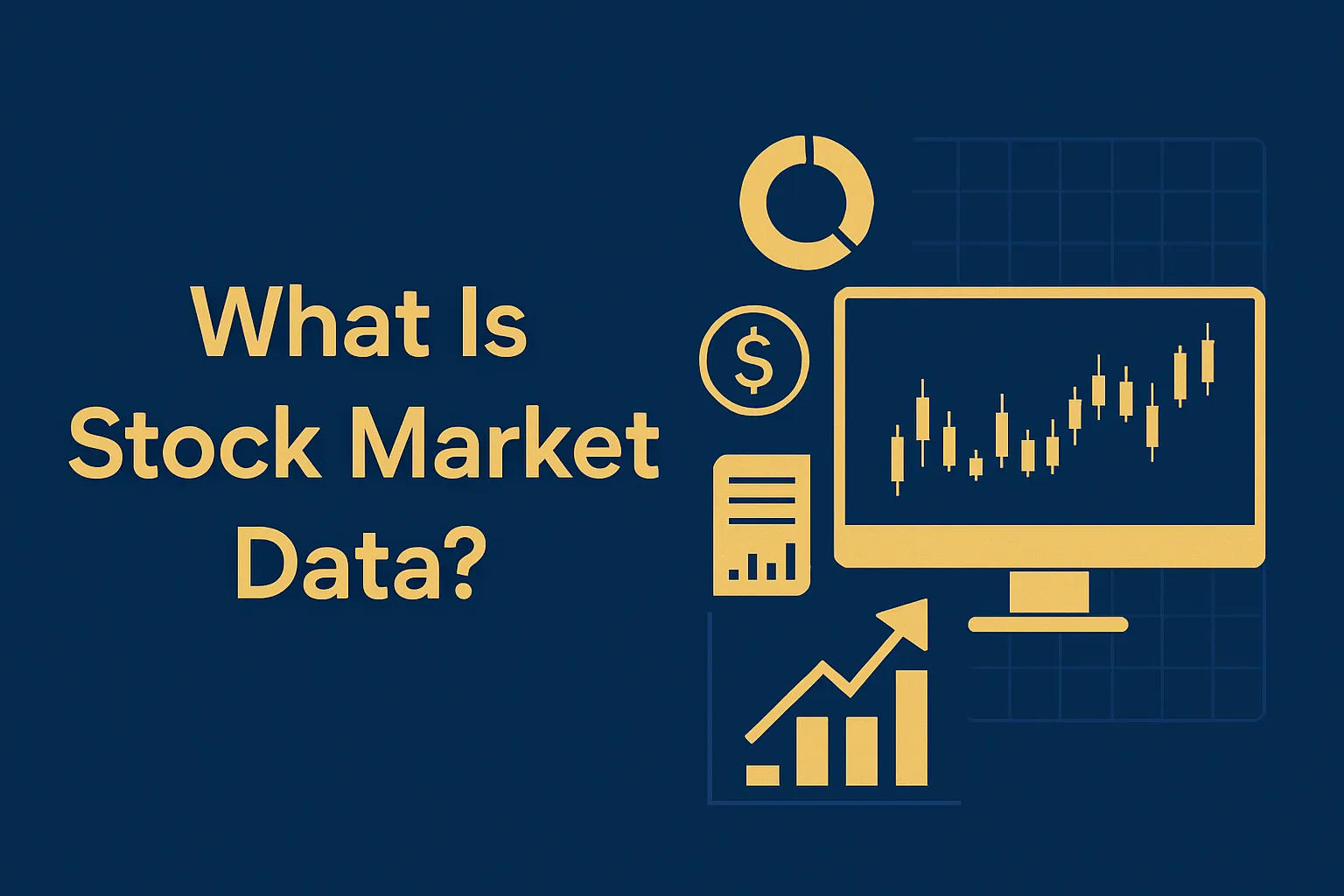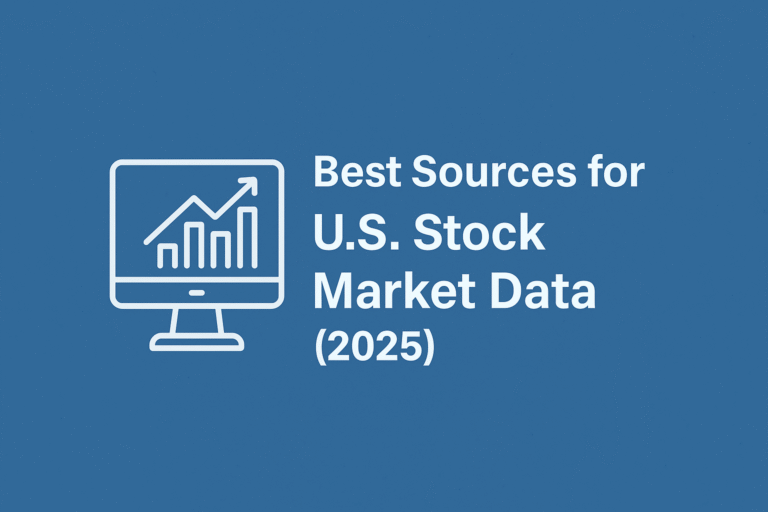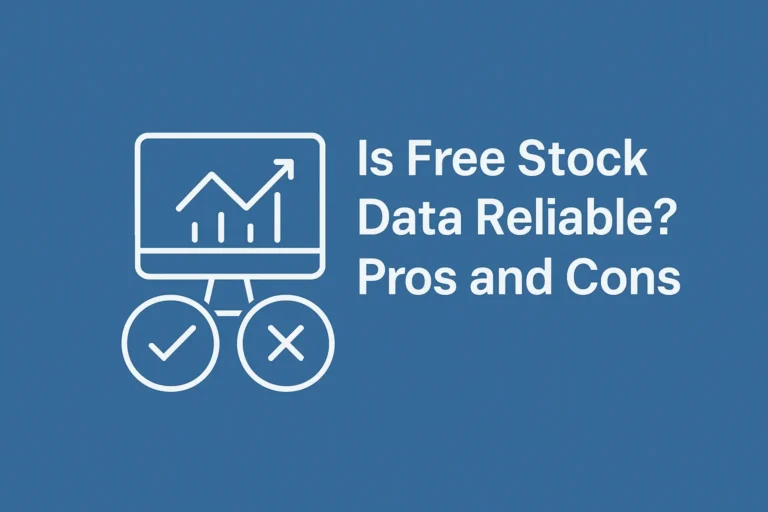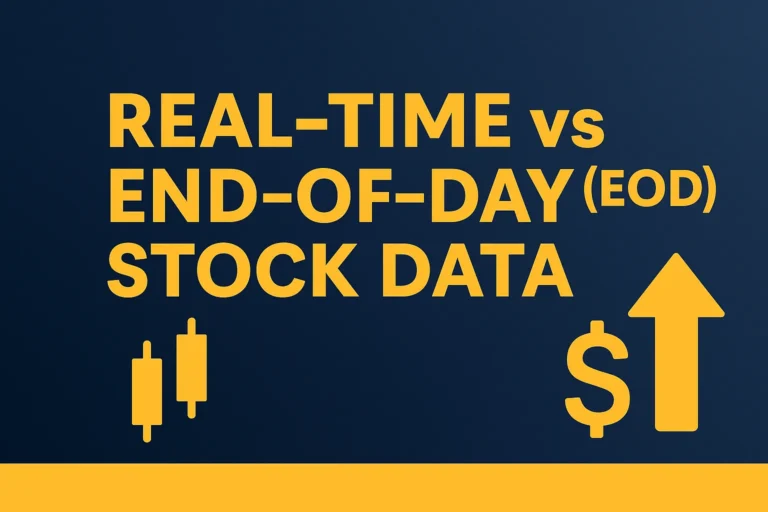What Is Stock Market Data?
Stock market data is the foundation of modern investing and trading. It refers to the information generated by financial markets about the performance and activity of stocks, indexes, and other securities. Whether you’re a beginner or an advanced trader, understanding what stock market data is — and how to use it — is crucial for making informed decisions.
Types of Stock Market Data
Stock market data can be divided into several categories based on the timing and nature of the information:
1. Price Data
This includes:
- Open: Price at which the stock began trading for the day
- High: Highest price of the trading session
- Low: Lowest price of the day
- Close: Final trading price of the session
Often presented together as OHLC data (Open, High, Low, Close).
2. Volume Data
Shows how many shares were traded during a specific period. Higher volume typically indicates stronger market interest or activity.
3. Real-Time vs Delayed Data
- Real-Time Data: Updated instantly as trades happen
- Delayed Data: Lags behind by 15–20 minutes (common in free platforms)
4. Historical Data
Covers past price and volume data — used for backtesting strategies and identifying long-term trends.
5. Fundamental Data
Includes financial metrics like:
- Earnings per share (EPS)
- Revenue
- P/E ratio
- Dividend yield
Essential for long-term investors analyzing company health.
6. Market Breadth Data
Shows how many stocks are advancing vs declining. Used to assess overall market strength.
Where Is Stock Market Data Used?
Stock market data is used by a wide range of users:
| User | Use Case |
|---|---|
| Retail Investors | Portfolio tracking and stock selection |
| Day Traders | Real-time price changes and volume surges |
| Analysts | Technical and fundamental analysis |
| Algorithmic Traders | Input for trading bots and models |
| Financial Media | Reporting and charting stock performance |
Why Is Stock Market Data Important?
Here’s why stock data matters:
- Decision Making: It helps traders decide when to buy, sell, or hold.
- Strategy Development: Enables technical and algorithmic strategies.
- Market Insights: Shows broader market health and investor sentiment.
- Regulatory Use: Ensures transparency and market integrity.
How Is Stock Market Data Collected and Delivered?
Stock exchanges like NYSE and NASDAQ generate the data during trading sessions. Data providers and platforms then distribute it to users via:
- Websites (e.g., Yahoo Finance, MarketWatch)
- Terminals (e.g., Bloomberg, Reuters)
- APIs (e.g., Alpha Vantage, IEX Cloud)
- Broker platforms (e.g., TD Ameritrade, Fidelity)
Conclusion
Stock market data is more than just numbers — it’s the core information that drives financial decisions across the world. Understanding its types, uses, and delivery methods can help you gain an edge in the market, whether you’re analyzing charts or building a portfolio.
FAQs
1. What is included in stock market data?
Price, volume, bid/ask, financials, news, and market breadth are all part of stock data.
2. Is stock market data free?
Basic data is often free (with delays), but real-time and premium data typically come at a cost.
3. Where can I get historical stock market data?
Platforms like Yahoo Finance, TradingView, and APIs like Alpha Vantage provide historical data.
4. What’s the difference between OHLC and candlestick data?
They represent the same values — OHLC data is often shown numerically, while candlesticks are visual representations.
5. Can I use stock data to build trading strategies?
Yes, both historical and live data are critical for developing and testing trading strategies.




